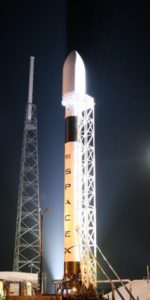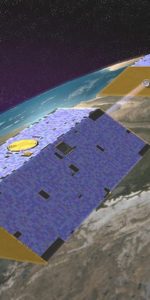
WASHINGTON — The giant black hole at the center of the Milky Way may
be vaporizing and devouring asteroids, which could explain the
frequent flares observed, according to astronomers using data from
NASA’s Chandra X-ray Observatory.
For several years Chandra has detected X-ray flares about once a day
from the supermassive black hole known as Sagittarius A*, or “Sgr A*”
for short. The flares last a few hours with brightness ranging from a
few times to nearly one hundred times that of the black hole’s
regular output. The flares also have been seen in infrared data from
ESO’s Very Large Telescope in Chile.
“People have had doubts about whether asteroids could form at all in
the harsh environment near a supermassive black hole,” said Kastytis
Zubovas of the University of Leicester in the United Kingdom, and
lead author of the report appearing in the Monthly Notices of the
Royal Astronomical Society. “It’s exciting because our study suggests
that a huge number of them are needed to produce these flares.”
Zubovas and his colleagues suggest there is a cloud around Sgr A*
containing trillions of asteroids and comets, stripped from their
parent stars. Asteroids passing within about 100 million miles of the
black hole, roughly the distance between the Earth and the sun, would
be torn into pieces by the tidal forces from the black hole.

These fragments then would be vaporized by friction as they pass
through the hot, thin gas flowing onto Sgr A*, similar to a meteor
heating up and glowing as it falls through Earth’s atmosphere. A
flare is produced and the remains of the asteroid are swallowed
eventually by the black hole.
“An asteroid’s orbit can change if it ventures too close to a star or
planet near Sgr A*,” said co-author Sergei Nayakshin, also of the
University of Leicester. “If it’s thrown toward the black hole, it’s
doomed.”
The authors estimate that it would take asteroids larger than about
six miles in radius to generate the flares observed by Chandra.
Meanwhile, Sgr A* also may be consuming smaller asteroids, but these
would be difficult to spot because the flares they generate would be
fainter.
These results reasonably agree with models estimating of how many
asteroids are likely to be in this region, assuming that the number
around stars near Earth is similar to the number surrounding stars
near the center of the Milky Way.

“As a reality check, we worked out that a few trillion asteroids
should have been removed by the black hole over the 10-billion-year
lifetime of the galaxy,” said co-author Sera Markoff of the
University of Amsterdam in the Netherlands. “Only a small fraction of
the total would have been consumed, so the supply of asteroids would
hardly be depleted.”
Planets thrown into orbits too close to Sgr A* also should be
disrupted by tidal forces, although this would happen much less
frequently than the disruption of asteroids, because planets are not
as common. Such a scenario may have been responsible for a previous
X-ray brightening of Sgr A* by about a factor of a million about a
century ago. While this event happened many decades before X-ray
telescopes existed, Chandra and other X-ray missions have seen
evidence of an X-ray “light echo” reflecting off nearby clouds,
providing a measure of the brightness and timing of the flare.
“This would be a sudden end to the planet’s life, a much more dramatic
fate than the planets in our solar system ever will experience,”
Zubovas said.
Very long observations of Sgr A* will be made with Chandra later in
2012 that will give valuable new information about the frequency and
brightness of flares and should help to test the model proposed here
to explain them. This work could improve understanding about the
formation of asteroids and planets in the harsh environment of Sgr
A*.
NASA’s Marshall Space Flight Center in Huntsville, Ala., manages the
Chandra program for NASA’s Science Mission Directorate in Washington.
The Smithsonian Astrophysical Observatory controls Chandra’s science
and flight operations from Cambridge, Mass.
For Chandra images, multimedia and related materials, visit:
For an additional interactive image, podcast, and video on the
finding, visit:





